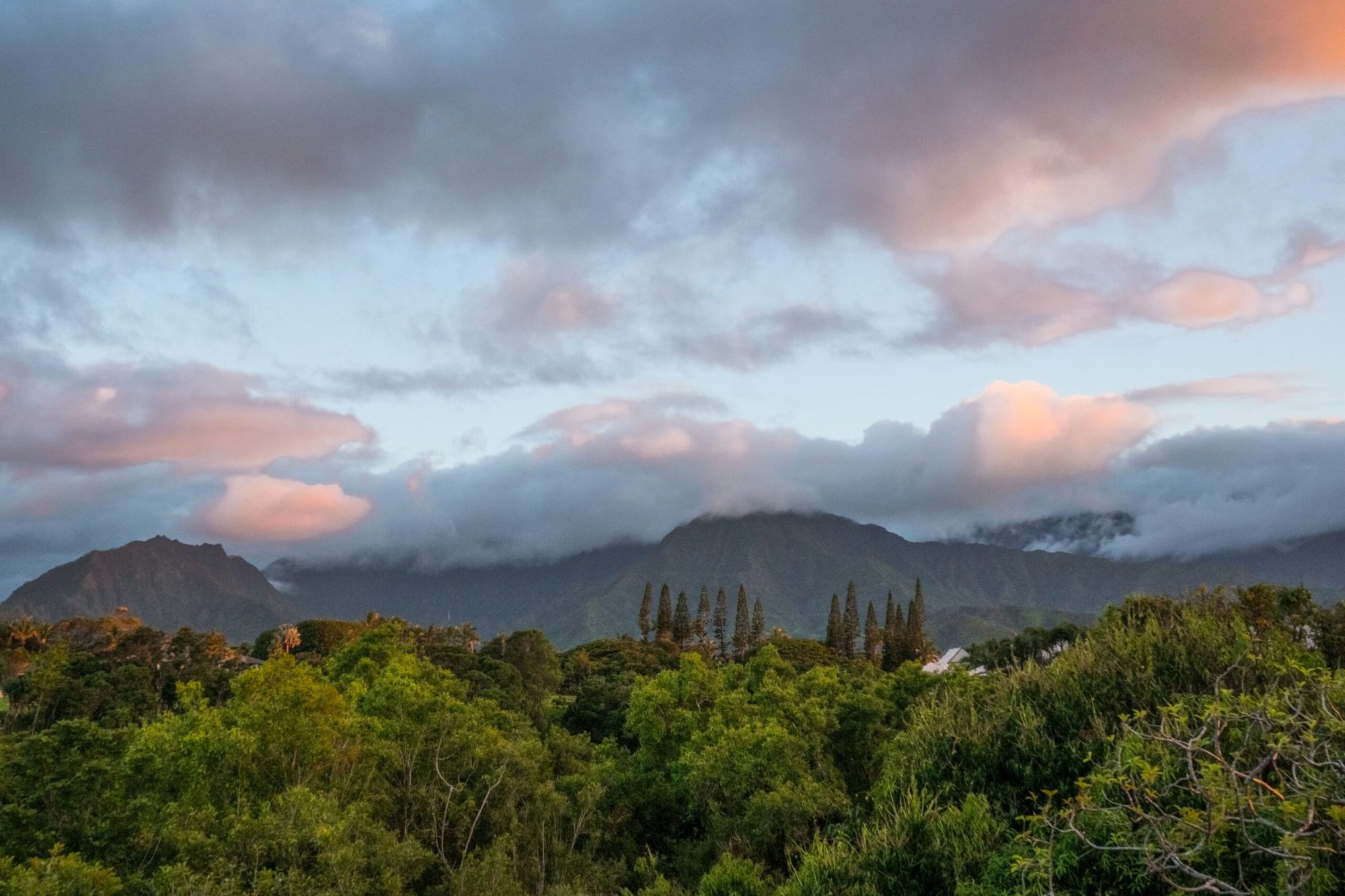THE TREES OF KAUAI

The natural beauty of Kauai is one of the island’s signature features. There are over 60 species of trees on Kauai, and the variety of trees and plant life you can encounter here has earned the island the nickname “The Garden Isle.” Much of the fauna is native to all of Hawaii, some are unique to Kauai, and all of them contribute to the singular and longstanding culture that makes Hawaii such a sacred place. While we can’t go over every single tree that grows in Kauai, we will provide an overview of the Garden Isle’s most striking trees.
NATIVE TREES OF KAUAI
Hala Trees
Hala trees are a native species in Kauai that appears in multiple varieties. The most common form is the Hawaiian Hala, but you can also find the smaller Loulu Hala and the burlier Polynesian Hala among the island’s landscape. Hala trees are traditionally used for medicinal and spiritual purposes to treat wounds and bruises and ward off negative energy. The trees are also used to build canoes, houses, and make clothes. While the pineapple-esque appearance of Hala fruits may be enticing, only the female trees produce edible fruit, which takes years to mature and bear fruit.
Mokihana Tree
The Mokihana citrus tree is endemic to Kauai and holds particular significance as its berries are the official lei material of the island. The Mokihana berries are noticeable for its large, green shape, and its anise perfume scent. Mokihana trees can grow up to 25 feet tall and are primarily found in humid forests at elevations between 1,200 and 4,000 feet.
Pōkalakala
Pōkalakala, also known as false ʻohe, is one of the rarest plants in Kauai. It only grows naturally in three areas – Nounou Mountain, the cliffs of the Nā Pali Coast, and Haʻupu Ridge – and is considered a critically endangered plant. If you are fortunate enough to see it, Pōkalakala makes for quite a sight, with 12-inch long leaves and plant blossoms resembling a string of pale yellow grapes hanging off the branch.
THE BANYAN TREE

Banyan trees may have originally been brought to Hawaii from India in the 1800s. Still, they’ve since become an unmistakable symbol of Hawaiian culture, representing the state’s beauty, resourcefulness, and resilience. The trees can reach up to 80 feet tall, and their roots mature into supplementary trunks over time. There are many Banyan trees in Kauai, but two are particularly memorable. One is in the National Tropical Botanical Garden, which is believed to be the largest Banyan tree in the United States. The other is a Banyan tree that is over 100 years old in the Poipu Shopping Village.
Historically, Hawaiians have planted Banyan trees to mark important events such as a wedding or the birth of one’s children. In honor of their cultural and environmental importance, Hawaii has made it illegal to cut them down without a permit.
OTHER NOTABLE TREES
ʻOhiʻa Lehua
The ʻohiʻa lehua tree is often the first plant to grow after a lava flow. Its flowers mostly develop a vivid red color, but they can also come in versions of yellow, pink, white, and salmon, with leathery leaves providing a striking contrast. The Ohiʻa provides food and shelter for native birds and insects and is used for kapa cloth beaters, pounding poi, and construction materials. The Ohia can also be found in mountains, rainforests, and bogs.
Koa
Koa is the largest and second most common tree in the Hawaiian islands. Reaching 82 feet at their apex, Koas feature fuzzy-looking flowers blooming in yellow or cream-colored spherical clusters. These flowers are very attractive to bees and other insects, who transform the flowers into flat seed pods that can grow to 6 inches long after pollination. Koa trees can flower throughout the year, but the peak is often during Hawaii’s winter and spring months.
Kukui
The state tree of Hawaii is the Kukui tree, also known as the candlenut tree. It earned this nickname because travelers would use its nut oil from kernels to light their lamps. The tree can grow to 80 feet tall and is further distinguished by its 8-inch, light-colored leaves and fragrant white flowers.
THE IMPORTANCE OF TREES IN KAUAI
The trees of Kauai aren’t just beautiful scenery. They serve a deeper purpose. Trees are irreplaceable in the ecosystem, providing the local community and wildlife with oxygen, shelter, resources, and food. Hawaiian culture has always recognized this importance and cared for the land with deep reverence for what it provides to the community. One of the main tenets of Native Hawaiian culture is to aloha ʻaina (love for the land) and praying to Lono, the God of the land.
Unfortunately, the tree population of Kauai is under threat due to climate change and mass urbanization. In response, myriad conservation organizations seek to protect and sustain the natural world. You can find a list of said programs on the Hawaii Association of Watershed Partnerships’ website.
NURTURING KAUAI’S NATURAL HERITAGE
The trees of Hawaii are vital to Hawaiian life’s past and present, similar to the Hawaiian Hibiscus Flower. For their beauty and history to persist in the future, locals and visitors must appreciate and respect the importance of trees as pillars of the state’s ecosystem and characters in Hawaii’s one-of-a-kind mythology. Join us at Koloa Zipline to marvel at Kauai’s earthly wonders and have the experience of a lifetime.
